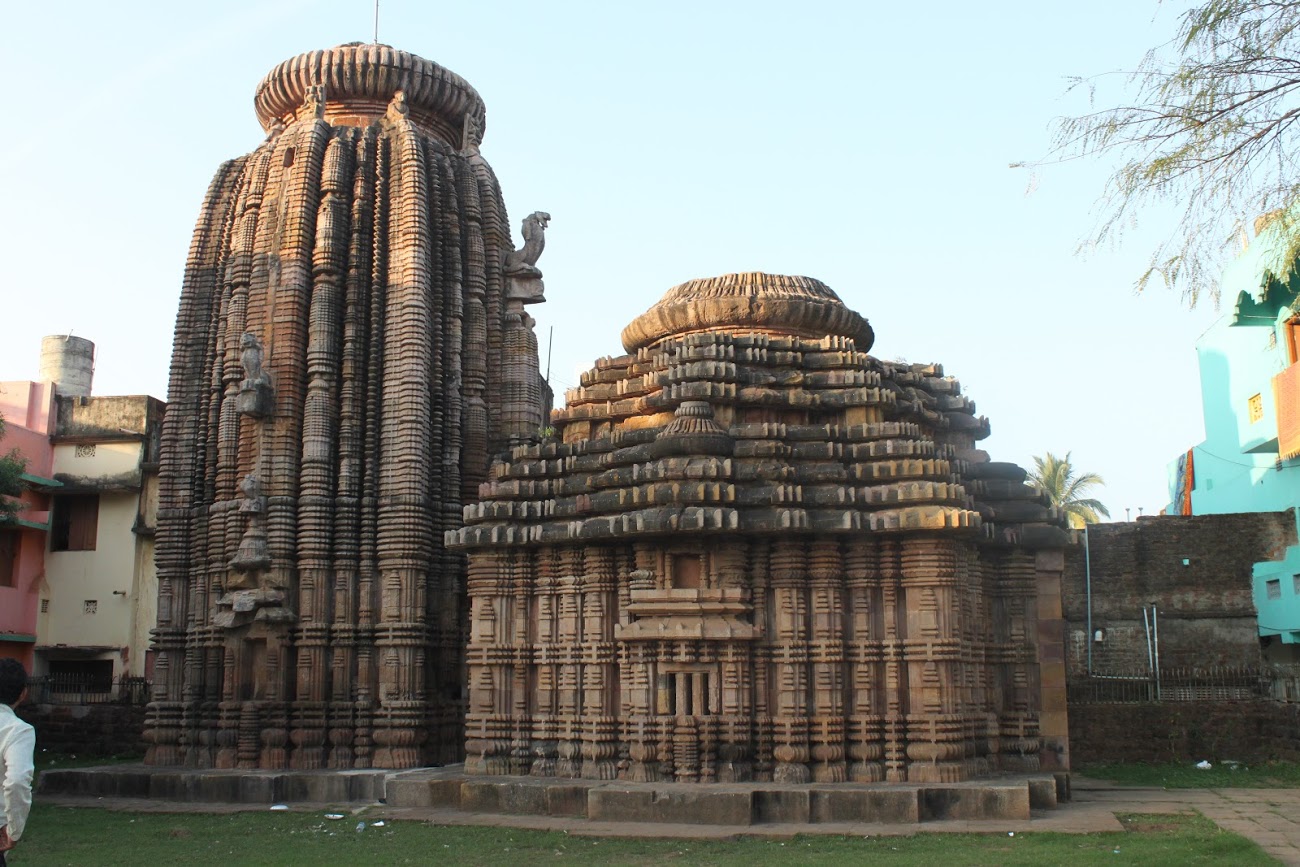Bakreswar Temple is situated near Bharati Matha in Bhubaneswar. This east facing temple stands on a low pitha (platform) and consisted of a deul and jagamohana. Deul is consisted of bada, gandi and mastaka. Bada is constructed in saptha-ratha pattern and consisted of pabhaga, jangha and baranda. The saptha-ratha plan of this temple is very unique, in the recess area between kanika and pratiratha a narrow paga is inserted which follows all the patterns and elements of bada and the gandi above. With this arrangement, the saptha-ratha pattern is converted into a constrained nava-ratha pattern. Pabhaga is made with five regular mouldings. Jangha is divided into two equal storeys separated by a madhya-bandhana of three mouldings. Two storey pattern of the jangha is broken at raha-paga which contains only a single storey. On this single storey is a pidha-mundi (miniature temple), top portion of which extends till the base of gandi. Baranda is consisted of eleven mouldings. None of the raha-niche has images at present.
Gandi follows the constrained nava-ratha plan of bada and consisted of ten bhumis. Pratiratha-paga has khakhara-mundi at each bhumi, while the anartha-paga has four anga-shikharas covering ten bhumis. Unlike to other contemporary temples, we do not find a vajra-mastaka over the raha-paga here. Instead we have three projecting lions, inserted at different heights over the raha-paga.
Jagamohana is constructed in nava-ratha plan and is largely reconstructed using original material as far as possible. Its pabhaga is made up with five mouldings. Jangha is divided into two equal storeys separated by a madhya-bandhana of three mouldings. Baranda is composed of seven mouldings. Raha-paga is decorated with a large gavaksha (window) on lower storey and an empty niche on the upper storey. Gavaksha has four balusters left plain. Gandi above has two sections, lower with five bhumis and above with four bhumis. Entrance to jagamohana has Gaja-Lakshmi on lalata-bimba and nava-grha over the architrave. Based upon the architectural style, the temple can be assigned to the late Ganga period of 14th century CE.
Next – Nageswar Temple

